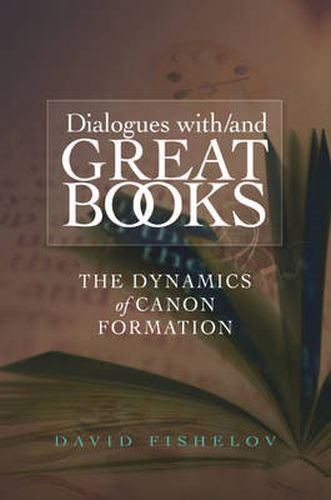Readings Newsletter
Become a Readings Member to make your shopping experience even easier.
Sign in or sign up for free!
You’re not far away from qualifying for FREE standard shipping within Australia
You’ve qualified for FREE standard shipping within Australia
The cart is loading…






What is the source of a book’s perceived greatness and why do certain books become part of the accepted canon? This book presents a fresh perspective on these questions: against prevalent approaches, it explains a work’s reputation in terms of its aesthetic qualities ( the beauty view ) or as the result of dictates by social hegemonies ( the power view ). Fishelov argues that the number and variety of echoes and dialogues a book generates with readers, authors, translators, adapters, artists and critics is the most important source of its perceived greatness. Part I – What is a Dialogue? What is a Great Book – provides useful distinctions between different kinds of dialogue (genuine dialogue, dialogue-of-the-deaf and echo-dialogue), develops theoretical arguments (why the dialogic approach is not circular), and empirically tests intriguing cases (why has Candide, and not Rasselas won the literary race for fame?). Part II – Genuine Dialogues with Great Books – presents in-depth readings of literary and artistic dialogues with well established canonical works, including Monty Python’s The Life of Brian, Swift’s distortion of More’s Utopia and some modern adaptations of Ovid’s Pygmalion, providing an opportunity to examine the process by which dialogues contribute to a work’s reputation. (A full list of examined works in provided on the Press website.) Through its special blend of theoretical arguments, empirical methods and sensitive interpretations, Dialogues with/and Great Books offers a stimulating invitation to re-think the Literary Canon and Intertextuality – and the intricate connections between the two.
$9.00 standard shipping within Australia
FREE standard shipping within Australia for orders over $100.00
Express & International shipping calculated at checkout
What is the source of a book’s perceived greatness and why do certain books become part of the accepted canon? This book presents a fresh perspective on these questions: against prevalent approaches, it explains a work’s reputation in terms of its aesthetic qualities ( the beauty view ) or as the result of dictates by social hegemonies ( the power view ). Fishelov argues that the number and variety of echoes and dialogues a book generates with readers, authors, translators, adapters, artists and critics is the most important source of its perceived greatness. Part I – What is a Dialogue? What is a Great Book – provides useful distinctions between different kinds of dialogue (genuine dialogue, dialogue-of-the-deaf and echo-dialogue), develops theoretical arguments (why the dialogic approach is not circular), and empirically tests intriguing cases (why has Candide, and not Rasselas won the literary race for fame?). Part II – Genuine Dialogues with Great Books – presents in-depth readings of literary and artistic dialogues with well established canonical works, including Monty Python’s The Life of Brian, Swift’s distortion of More’s Utopia and some modern adaptations of Ovid’s Pygmalion, providing an opportunity to examine the process by which dialogues contribute to a work’s reputation. (A full list of examined works in provided on the Press website.) Through its special blend of theoretical arguments, empirical methods and sensitive interpretations, Dialogues with/and Great Books offers a stimulating invitation to re-think the Literary Canon and Intertextuality – and the intricate connections between the two.